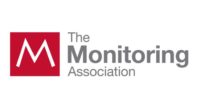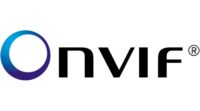Bill Singer, lobbyist for the Alarm Industry Communication Committee, began a panel on the 3G sunset with an observation: the fact that this meeting was happening via webinar was indicative of why the sunset delay needs to happen.
“That’s exactly the challenge; we can’t get into homes, and that’s why we need the delay,” he said.
The Monitoring Association, with panelists representing the Alarm Industry Communications Committee (AICC) and the Medical Alert Monitoring Association (MAMA), held this webinar to discuss how the 3G sunset will impact businesses, customers and integrators, along with what professionals can do to help. Lou Fiore, AICC chair, and Dan Oppenheim, president of MAMA and CEO of Affiliated Monitoring, joined Singer for the webinar.
As of right now, AT&T is calling for a sunset date of Feb. 22, 2022. Verizon’s sunset is set to happen 10 months later in December of 2022.
The security industry is seeking a longer transition period before AT&T sunsets it 3G networks, because of the impact of COVID-19. Six million alarm industry radios have the potential of becoming dysfunctional without a smooth transition.
The 2G transition lasted four and a half years; now, the transition is two and a half years, with three times as many units to transition.
According to Singer, this would be a major challenge in normal times. This transition is now even more challenging because of the pandemic. He added that there is no law or rule from the Federal Communications Commission (FCC) to prevent AT&T and Verizon from stopping the sunset, with both companies telling Congress that the 3G sunset needs to happen quickly to give more space and speed to 4G and 5G spectrums.
However, Singer pointed out that other parts of the world are maintaining 3G until 2025 or even 2030. Additionally, AT&T has issued press releases about how its current network is handling increased usage due to the COVID-19 pandemic. Although it’s unclear when the COVID-19 pandemic will end, Singer predicts that once people return to work in offices, the demand for video conferencing applications like Zoom won’t be as high. Which is all to say: the sunset doesn’t need to happen in 2022.
“We think AT&T is moving too quickly,” Singer said.
AT&T announced last week that it has acquired CellBounce, a user-installable device mean to perform the required upgrades before the 3G sunset.
However, according to Singer, it’s not a perfect solution.
“It’s a solution that works for home units, but it doesn’t work for business units,” he said. “CellBounce is only going to be able to produce several hundred thousand units next year. We’re going to leave a lot of people out there at risk.”
CellBounce is also not yet certified to work on Verizon networks.
According to Oppenheim, 1 million senior citizens use 3G devices, primarily consisting of personal emergency response systems (PERS). Those who use PERS tend to be dependent on caregivers who would need to install a system for the device to work.
Seniors and those in nursing homes and senior living facilities are more susceptible to the virus, meaning those caregivers are not able to assist in setting up the necessary equipment to update a PERS device due to fear of getting the virus.
“In the time of COVID-19, that is not happening,” he said.
The Monitoring Association is thus asking industry professionals to reach out to their elected officials to tell AT&T to extend its sunset period to December 2022.
“To hear from other members of Congress, they’d be more inclined to respond,” Singer said.
According to Fiore, AICC has reached out directly to AT&T. The reaction from AT&T is not what he expected, but he hasn’t lost hope.
“It’s been basically pushback so far, but at least we know we’re getting their attention,” he said.
Regardless, Oppenheim said that carriers should listen to the security industry’s argument for the delay.
“There needs to be a recognition from the carriers that they are the conduits for protecting lives,” Oppenheim said.



